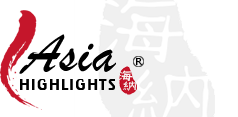What makes up a country is first and foremost its people. The Kingdom of Cambodia is populated by an estimated 17 million people, 90% of whom belong to the Khmer ethnic group. The Khmer people in Cambodia date back to the Khmer Empire, which flourished from the 9th to the 15th centuries.
The link between the country's identity and the Khmer people is clearly evident in its name. 'Cambodia' in the Khmer language is 'Kampuchea', or more colloquially, 'Srok Khmer'. The word 'Kampuchea' is derived from the Sanskrit term 'Kambujadesa', which translates to 'Khmer Empire', and the term 'Srok Khmer' means Khmer's Land.
The ethnic groups and languages in Cambodia reflect the historical identity of Cambodia as the land of the Khmer people, but also Cambodia's openness towards interactions with and influences from neighboring peoples.
Ethnicity
The Khmer People
Khmer people make up the majority of Cambodia's population. The Khmer first arrived in Cambodia no later than 2000 BCE, probably from India, and they brought with them agricultural practices and rice cultivation. Back then, the Khmer were a part of Greater India, adopting Indian religion, science, and customs, and borrowing from Indian languages.
The modern Khmer strongly identify their ethnic identity with their religious beliefs and practices, combining Therevada Buddhism with elements of indigenous ancestor-spirit worship, animism, and shamanism.
Most Khmer people live in rural villages, and work either as rice farmers or fishermen. Throughout the year, their lives revolve around the wat (temple) and Buddhist ceremonies.
The Khmer Loeu
In Cambodia, ethnic groups other than the majority Khmer can be classified as indigenous or non-indigenous. The indigenous minorities are collectively referred to as 'Khmer Loeu', which means 'upland Khmer'. They comprise approximately 17-21 ethnic groups, most of whom speak Austroasiatic languages related to Khmer.
The Khmer Loeu population is estimated to be more than 140 thousand people and they constitute the majority in the remote mountainous provinces of Ratanakiri, Mondulkiri, and Stung Treng, in the northwest of Cambodia. Most live in scattered temporary villages, with only a few hundred inhabitants.
The non-indigenous ethnic minorities of Cambodia include the Vietnamese, Chinese Cambodians, and the Cham people.
Discover real reviews of Highlights Travel Family's best-rated service across trusted platforms.

 
|
Planning our trip
We have spend that last eight months planning a trip to Vietnam, Cambodia and Thailand. Alisa Lia was creative & patient helping us customize our tour to include the sites and adventures we were excited to see. Hard waiting for the trip to start. More
Jamie Danner, Oct 2023
|
My experience in Thai
All of this was well organized by the local office. The holiday was wonderful. Our guide, Mr. Longdy( Siem Reap)were exceptional. He shared his extensive knowledge of the many wonderful places we visited, and were flexible to take us to additional places along the way based on discussions. Thank you so much .shared their extensive knowledge of the many wonderful places we visited, and were flexible to take us to additional places along the way based on discussions. More
kelli, Jul 2023
|
Seamless Planning
From the day I submitted an inquiry request, I instantly received a response from Monica asking my preferences for my trip. She has been attentive and responsive to our every needs and we very much appreciate it. Looking forward to our trip in November but many thanks to Monica for making this experience to seamless thus far. More
Sana Samhouri, Jul 2023
|
The Vietnamese
As of 2013 there were an estimated 61,000 Vietnamese speakers in Cambodia. Before the Cambodian Civil War, there used to be a lot more Vietnamese living in Cambodia, but they were nearly "eradicated" during the war.
Due to the long history between the two people groups, many Cambodians have mixed Vietnamese and Khmer ancestry, but no longer speak Vietnamese and identify themselves as Khmer. Such people are engaged primarily in aquaculture in the Mekong Delta of the southeast.
The Chinese Cambodians
Chinese Cambodians constitute only about 1% of the population, but they dominate the business community, politics, and the media. Most are descendants of 19th-20th century Chinese settlers who came to Cambodia in search of opportunities in trade and commerce, during the time of the French protectorate.
The Cham People
The Cham people are descendants of refugees from various wars of the historical Kingdom of Champa. Champa was a contemporary and a rival of the Khmer Empire. The Cham people in Cambodia number approximately a quarter of a million, and are primarily farmers and fishermen.
Historically the Cham were concentrated in Kampong Cham province, although now increasingly they live alongside ethnic Khmers in many areas. They speak Western Cham, which is no longer mutually intelligible with the closely-related Eastern Cham, spoken by Cham in neighboring Vietnam.
In contrast to the Khmer who are Theravada Buddhist and to the Cham in Vietnam who are Shivaite Hindu, the vast majority of Cham people follow Sunni Islam. During the Khmer Rouge reign, the Cham were particularly targeted for persecution and it is estimated that up to 90,000 Cham people were killed in the genocide.
Other Ethnic Groups
There are also small numbers of Thai ethnic groups in Cambodia, including the Thai, Lao, Tai Phuan, Nyaw, Shan, and Kola. Recently there have also been Hmong immigrants who reside along the Lao border, and Burmese peoples who immigrated to Phnom Penh.
Language
Khmer
Khmer is the official language of Cambodia. Although it belongs to the same language family as Vietnamese, unlike Vietnamese, it is not a tonal language. The language is much influenced by its proximate neighbors such as Thai, Lao, Vietnamese, and Cham, and also by Sanskrit and Pali.
The Khmer script, like many other Southeast Asian scripts, is adapted from the Pallava script, which initially developed in Southern India around the 6th century. Khmer developed the first alphabet, and this was later adapted for the Thai and Lao scripts.
Apart from standard Khmer, which is spoken through the Central Plain and is the dialect taught in schools and used in media, there are two main dialects distinguished in Cambodia: Phnom Penh Khmer spoken in Phnom Penh and Khmer Khe in Stung Treng, a northern province bordering with Vietnam.
Visit Cambodia with Asia Highlights
At Asia Highlights we offer tailor-made tours through Asia, where you can enjoy all highlights as well as amazing cultural experiences. To get started, send us an email.
Why Asia Highlights (10,000+ reviews & 98.8% 5-star rating)
- Save Your Time:
- Less research, more enjoyment!
- Real-time 1V1 expert planning
- Maximize Your Flexibility:
- Personal local guide and ride
- Explore at your own pace
- Celebrate Your Journeys:
- Specially-crafted family adventures
- Celebrate milestones with style!
- Cambodia Weather in January
- Cambodia Weather in February
- March Weather in Cambodia: March Travel Guide for Cambodia
- Cambodia Weather in April 2024, Where to Go and Travel Tips
- Cambodia Weather in May 2024, Where to Go and Travel Tips
- Cambodia Weather in June 2024, Where to Go and Travel Tips
- Cambodia Weather in May 2024, Where to Go and Travel Tips
- Cambodia Weather in August 2024, Where to Go and Travel Tips
- Cambodia Weather in September 2024, Where to Go and Travel Tips
- Cambodia Weather in October 2024, Where to Go and Travel Tips
- Cambodia Weather in November 2024
- Cambodia Weather in December 2024
Get Inspired with Some Popular Itineraries
At Asia Highlights, we create your kind of journey — your dates, your destinations, at your pace. You can have any trip tailor made for your travel.

